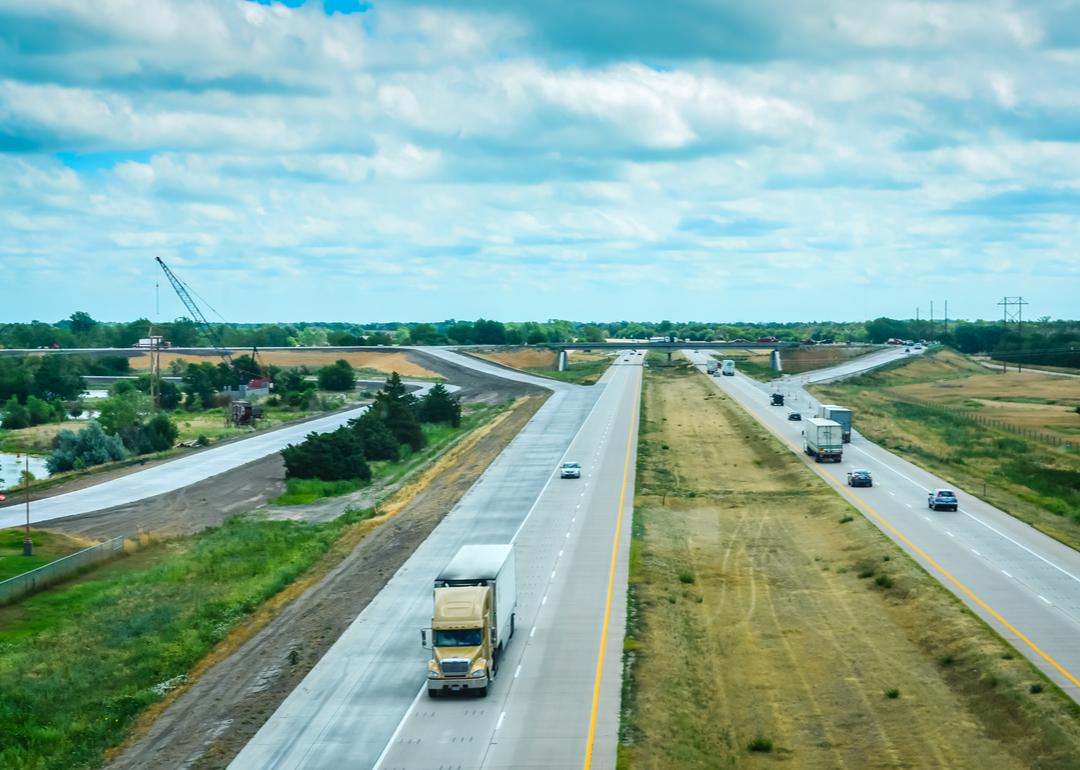
This story originally appeared on Uplift Legal Funding and was produced and distributed in partnership with Stacker Studio.
Nebraska is the #4 worst state at buckling up
According to the Insurance Institute for Highway Safety, 36,096 people died in motor vehicle crashes due to a variety of causes in 2019, including intoxication, speeding, problematic driving behaviors, and lack of safety belt use. The National Safety Council estimates that seat belts have saved 374,276 lives since 1975. Research supports this, as several studies have found, “the seat belt is the single most effective feature in a vehicle to reduce the severity of injury to the vehicle occupants that results from road traffic crashes.”
While seat belt usage varies from state to state, at the national level, 90.7% of people wear seat belts. Seat belt laws are either primary or secondary. With primary seat belt laws, police officers can ticket an unbelted driver or passenger regardless of whether they’ve committed another traffic offense. When it comes to secondary seat belt laws, law enforcement may only issue a ticket to an unbelted driver or passenger if they are committing another citable traffic offense.
Seat belt laws are also variable across the country. Currently, New Hampshire is the only state in the nation that does not have a law that requires adult drivers and front-seat passengers to wear seat belts, though anyone under 18 must use a seat belt.
Citing data from the National Highway Traffic Safety Administration, Uplift Legal Funding identified the states with the lowest seat belt use rates. Due to the impact of the coronavirus on data collection, Uplift Legal Funding used 2019 data which was available for all 50 states.
Keep reading to find out how much people in your state use seat belts, or see the national story here.
Nebraska by the numbers
- Seat belt use rate, 2019: 79.7% (+4.7% change since 2003)
- Seat belt use rate, 2003: 76.1%
According to the Nebraska Department of Transportation Highway Safety Office (NDOT-HSO), 197 occupants of passenger vehicles died in 2019 in car crashes. Of those people who died, 63% were not wearing a seat belt. Nebraska has a secondary seat belt law and requires proper seat belt usage from drivers, all front-seat occupants in the vehicle, and all children 8 to 18. NDOT-HSO considers the following issues priority areas: safety belts/occupant protection, alcohol-related, speed, and young drivers. Other areas of concern are pedestrian/bicycle, motorcycles/mopeds, distracted driving, and drowsy driving.
While not everyone uses safety belts, they have been around since the 19th century. Many streetcars were outfitted with lap belts in the 1930s, though they offered little protection for the torso and head. The Wisconsin-based Nash Motors began offering seat belts in 1949, and Wisconsin became the first state to require safety belts in front seats in 1961 for all car models from 1962 on, though this law did not make it mandatory for occupants to wear them. The three-point seat belt, most often used today, was devised by Volvo engineer Nils Bohlin in 1959, and such seat belts were mandatorily placed in all new U.S. vehicles beginning in 1968. New York became the first state to require mandatory seat belt use, though only in front seats. Those who didn't comply could be fined $50.
The seat belt journey has not been an easy one though, and even with mounting science-based evidence of their ability to save lives, some people continue to refuse to use them. Reasons for lack of use range from device failure to personal choice.
Read on to see which states are the worst at buckling up.
States with the lowest seat belt use rate
#1. New Hampshire: 70.7% seat belt use rate in 2019 (+42.5% change since 2003)
#2. South Dakota: 75.2% seat belt use rate in 2019 (+7.6% change since 2003)
#3. Wyoming: 78.3% seat belt use rate in 2019 (+11.7% change since 2003)
#4. Nebraska: 79.7% seat belt use rate in 2019 (+4.7% change since 2003)
#5. Mississippi: 80.5% seat belt use rate in 2019 (+29.4% change since 2003)



